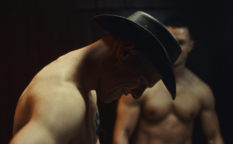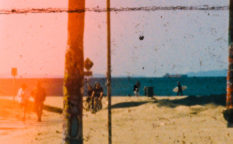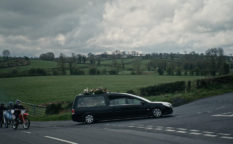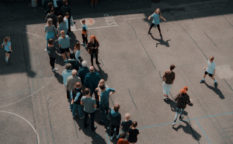In talk with Inna Sahakyan: “Aurora’s story was very unique”
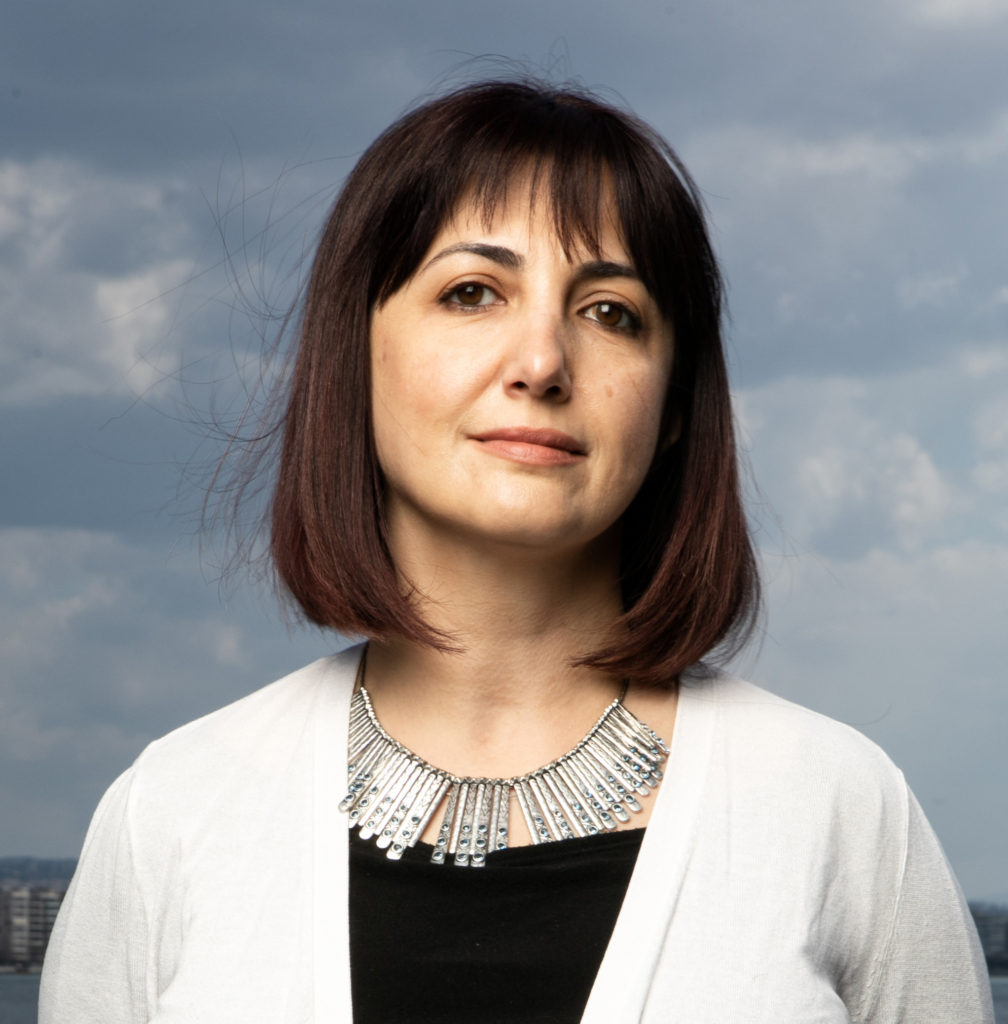
Aurora’s Sunrise is the first ever animated documentary film from Armenia, and also the country’s first animated submission for Oscars. Based on the story of Arshaluys (aka Aurora) Mardiganian, a survivor of the Armenian genocide, director Inna Sahakyan’s focuses on five years of her life, on the events shortly before-, during and after the genocide, when she found an unexpected fame in the USA.
The director is telling Aurora’s story in a unique manner, using the excerpts from her interviews given on different ocasions, and forming a fullblooded narrative through the animation and the use of scenes from Oscar Apfel’s silent film Ravished Armenia. The film originally called Auction of Souls (1919), was a huge hit back in time, it that mysteriously vanished (only eighteen minutes of the film survived). Aurora was playing herself in this movie that became a hit in the States and travelled to Europe to be screened in several countries.
We spoke to the director right before IDFA. Aurora’s Sunrise currently screens at Tallinn Black Nights, where she was also in attendance.
Shortly after this interview, the film bagged Best Animated Film at the Asian Pacific Screen Awards, and more recently her other documentary Mel about Armenia’s beloved weightlifter whose come out as a transgender caused a huge scandal in the country, got the Special Mention at the prestigeous Thessaloniki Documentary Film Festival.
There are many reasons to celebrate. After its world premiere in Annecy, “Aurora’s Sunrise” won the Silver Apricot in the International Competition at the Golden Apricot Yerevan International Film Festival, and soon after it was announced that it’s Armenia’s Oscar submission.
It is a very responsible task now because I have to represent my country and also to participate in this very heavy Oscar race. As you know, there are more than 90 films from across the world some done by great and famous directors, who are participating this year. The hopes are small, but I do have hopes and we are trying to do whatever we can to have more publicity, and I hope that the academy members will watch and like the film, so that we at least have a chance to be shortlisted.
It is a film that deals with an important and painful topic through the story of Aurora Mardiganian, the survivor of the Armenian genocide of 1915. She was unfortunately almost unknown to the world until you made this documentary.
Aurora was unfortunately not alive when I started filming. She died in 1994, and I began working on the project in 2014. It took me seven years to finalize it. A large part of time went into the development stage, because topic-wise you have to do a lot of research as it is a historic film, and additionally – financing was difficult. It was a heavy puzzle that we had to put together to have at least the minimum budget for an animated 65 minute long documentary. Actually, the production started in 2019. It was all mixed. When making a documentary you can never separate development from production. We also had the Covid situation which was crazy. We had to work online with our Lithuanian and German partners. We were doing different parts of the film that way. Then, the war in Armenia in Nagorno-Karabakh escalated and we had to stop the production. So, that was a very heavy and long stage, but I can say that back then in 2014 the war situation was much more easier so to speak. There were generally less armed conflicts than now. What made it difficult to make this film was the realization that we were supposed to learn lessons from the history, but that the same mistakes got repeated while we were making the documentary that dealt with crimes agains humanity. That was a challenging process.
The whole story is particularly intriguing because you stumbled upon it while doing the research for something else.
I had a vague knowledge about Aurora’s story, but I didn’t know the details. I read the book “Ravished Armenia” about the silent movie hit from the 1919 Auction of Souls. To be honest, the book was very interesting, but it wasn’t written directly by her. It’s her co-author Harvey Leyford Gates who did it, mostly because her English was not good enough. It has so much of the standard US propaganda of the beginning of 20th century. Still, that topic was something I was interested in from the beginning, but I didn’t have enough of material to make a film. What I didn’t know about were the testimonies, and when I found out about them, it was a big surprise. There were in total 700 testimonies by the survivors, and the Zoryan Institute recorded the video material with them. I was watching those videos, trying to find strong stories in 2015, which marked 100 years of the Armenian genocide. The experts from the institute suggested I should watch the interviews with Arshaluys Mardigian, and I was so shocked when I did. Her story was very unique. It is not only what she had to say about the genocide, also the fact that she made it in Hollywood, her stories about meeting Charlie Chaplin and the events she attended. That’s when I understood that I had my documentary subject. She wasn’t alive anymore, so I couldn’t make it a classical documentary for the simple reason that I could not ask her questions, but I did have her answers through the videos I had the access to. I learned that there were two more of her testimonies recorded, one in 1975 and the other in 1984, so I had three sources with a so to speak direct connection to Aurora herself. That was the main push to start the film because I already had her as the documentary character.
You mentioned that there were seven hours of the video material with Mardigian. Was is difficult to chose what to incorporate in the film, or did you have a very clear image from the beginning of what you wanted to have?
The image crystalized itself during my research which took a really long time. I had to go through all interviews and compare them to the historical parts, and that involved listening to other survivors’ testimonies, and work with scholars to understand what was more realistic. To be really honest, in some places what she said was different than what was written in the book. On the othercorrections in the scriü hand, the book wasn’t really written by her, so I tried to find out what was closest to truth. For me it was obvious that I was going to capture those five years of her life, starting with right before the genocide and finishing when the campaign in the USA ends. For me, that was the narrative arc from the beginning. There were many corrections of the script. It was a challenging wor. At the end, I opted for a more classical storytelling, reinforcing the first script. It started in the USA with her memories about Armenia, and the genocide. My colleagues, co-scriptwriters Kerstin Meyer-Beetz and Peter Liakhov understood that it might be hard for the international audience to grasp the story if we did it differently. At the end of the day, those interviews were the most crucial for me as the documentary filmmaker. The milestones of the script were the interviews, and I knew from the starts which parts of them to use in the film. I have built the rest of the story around them.
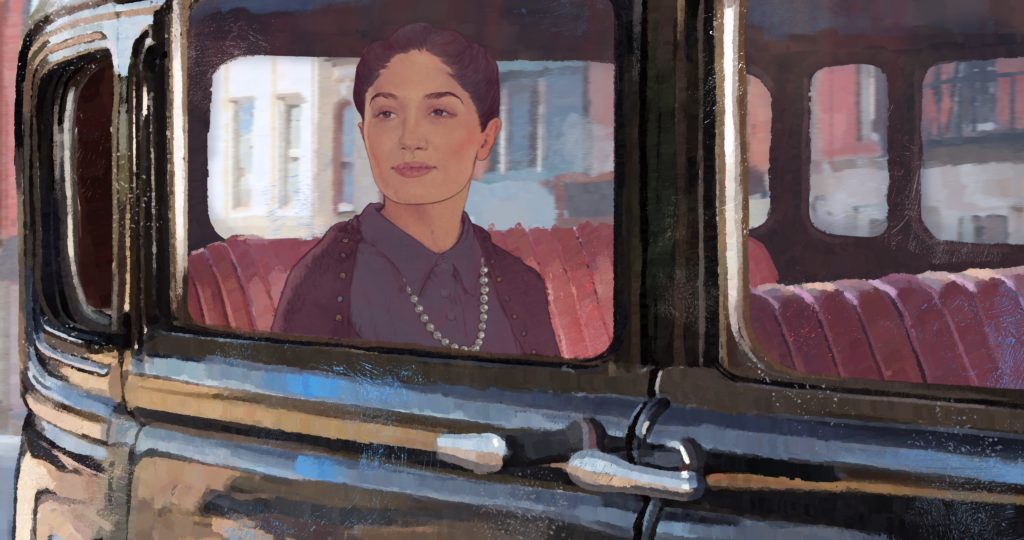
One of the most interesting aspects of your film is the decision to use the animation to build most of its visual narrative.
As I mentioned, I had those amazing interviews, the 18 minutes of the silent movie, and some archival material that I was going to use in the film, but the question was how to tell the story itself because turning it into talking heads wouldn’t be interesting. I needed something visualy strong, and because animation has much more freedom in terms of imagination, the use of colours, the expression techniques, and it has the ability to transfer the mood to the screen, I thought it was a great oportunity to use the symbols to speak about the most heavy parts of the story. For our creative team it was obvious that we wanted to use the animation for the story Aurora is telling. Her words are heavy, but in a way it’s a heavy fairytale because of the way she speaks. It kind of added to the animation. On the other hand, I would have loved to do the live action movie. At the same time I knew that it would be hard to pull that off from the historical side and very limited storytelling tools. You can use your imagination in an animation, and combine the artistic with the historic.
We worked on the animation together with our Lithuanian colleagues, and the two countries’ teams came up with very creative solutions. Most of the lead artists are from Lithuania, and it was a very interesting collaboration. Different cultures, different techniques, and the combination of all these different elements brought the style that we created. We used the Armenian colours, but the style of illustrations was different. And, the animation itself is done in the cg papercutout technique. So, we worked with computers, but technique-wise, it looks like a classical papercut animation, quite limited in the movement. Also, we had to film those scenes in front of the greenscreen.
It took you seven years to finalize the film, with its final phase happening during the most challenging Covid-19 impacted times.
Well, with this type of film, it is very difficult to separate pre-production, production and post-production. Everything was running in parallel, especially during Covid years. We had to do the work online which was crazy. We established a special platform to be able to coordinate it. Illustrators in Lithuania were uploading their illustrations every day, we were responding with our comments and corrections and it was an endless workload, day and night.
We were very optimistic at the beginning when we started with a smaller film. To be really honest, none of us had an experience with working on such a big animated project. Although the animators were professional, they never created feature lenght films. It was very hard of us to estimate the ammount of work which raised and raised with time. We originally thought that it would last a year, but it was progressively growing up, so the team had to be extended. More people were involved because otherwise it would be impossible to do the work. That also brought more challenge: when more people are involved in a project, it is difficult to keep the costs down. Also, when you have many illustrators, they have different styles. When the main part of work was done, we had to prolong the time for 16 more months, to be able to coordinate and compare everything: the colours, changing the type of movement here and there, making it look like it was done in the same animation style. The funny thing is that before we started the pre-production we had two meetings, one with the Lithuanian and one with the Armenian team, and after that we were able to have the preliminaries.
Does anyone know what actually happened to Oscar Apfel’s “Auction of Souls”?
It’s a mystery. There is no definite answer to that question. Aurora Mardiganian hoped that one day the film will be found, in style of Fritz Lang’s “Metropolis”. Even is somebody does find the film eventually, the problem is the time, and the sensitivity of the rolls.
Regrading the disappearance, there were some rumors about the involvment of the Turkish lobby after the World War I, trying to erase any evidence of the genocide. There is a theory that one copy was transported to Soviet Armenia, which is why the eighteen minute long reel could be found. it is very strange because it was shown all over the West, and it even reached Australia, Canada and most of the European countries. So the physical film reels were transported, and not just one copy because there were parallel screenings in different places.
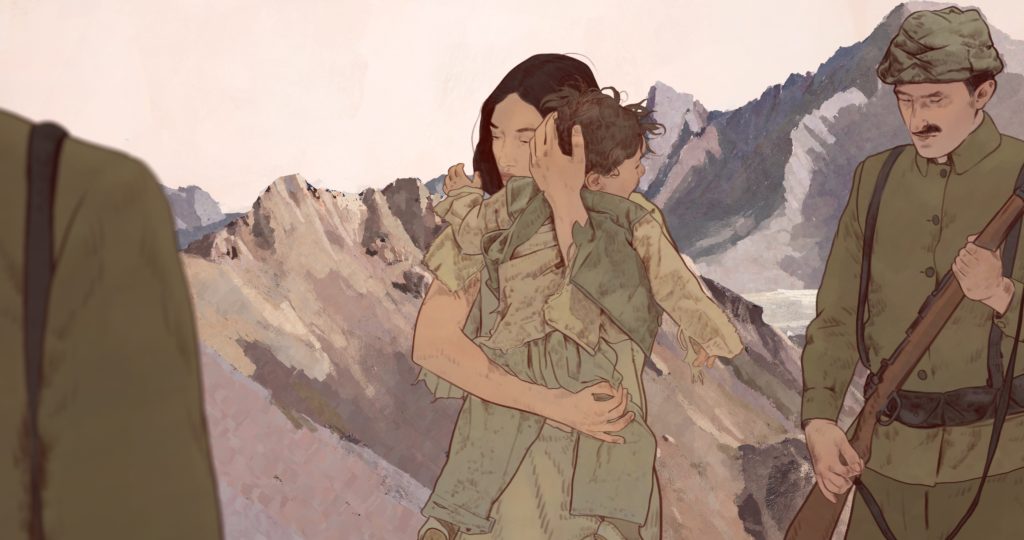
Aurora was also touring with the film.
Yes. That is also an interesting story. When I started researching in 2015, in the Library of Congress they were digitalizing the newspapers from that time, and I saw several articles about the film. I would discover something new every day. It was an amazing source. Basically, Auction of Souls was very popular in 1919. There were article in all major publications about it. We could learn something from how the films were promoted 100 years ago. I was also comparing facts presented in the press with the things that Aurora was saying. Also, her book Ravished Armenia was published in the papers in form of 40 articles. Also, the newspapers were following her court case against the Gates. She basically won it. They had to pay her the compensation, and she could get her sister over to the States.
The beginning of the animation is based on Aurora’s prosperous life in Chmshgatsak. You pay a lot of attention to details such as patterns, family house, even her father’s business with silk bugs. Did you have any photographs you could work with?
She beautifully described everything, especially her childhood. She was talking in such interesting manner, almost like telling a fairy-tale. But there is also a lot of historical evidence about the pogroms including photographs from all possible places. Also, I happen to work with a Turkish filmmaker who went to the locations. Initially, we were planning of going there ourselves, but it was a critical situation, so we worked with the local filmmakers.

